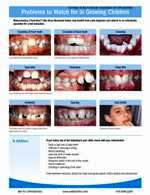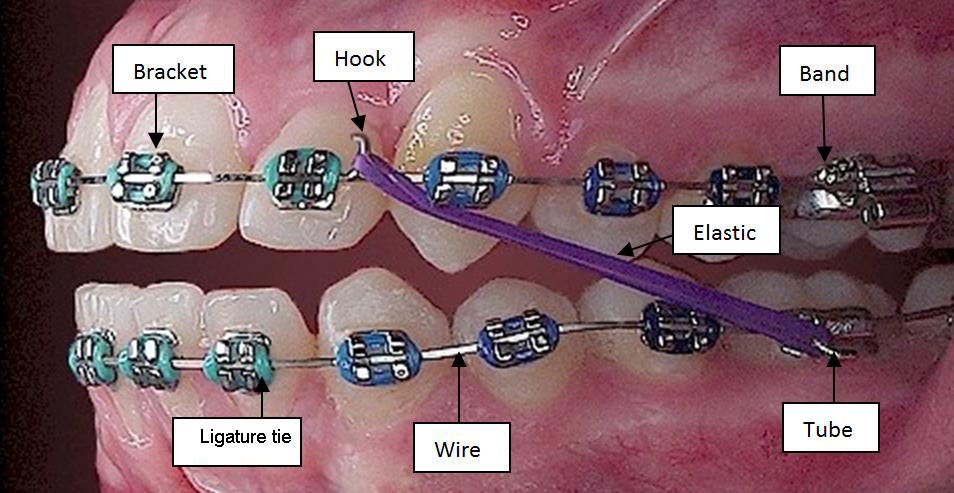December 21st, 2016
With the holidays just around the corner, we decided to have a little fun with one of the oldest and well-known Christmas poems around, the classic "Twas the Night Before Christmas". Legend says that the original version of the poem was written by Clement Clarke Moore on Christmas Eve in 1822 during a sleigh ride home from Greenwich Village after buying a turkey for his family.
Our orthodontic version, on the other hand, was inspired by our love of the holidays and our desire to keep things fun for our patients. We hope you enjoy it . . . Happy Holidays from all of us at Bel Air Orthodontics!

December 2nd, 2016
 Open enrollment season for Flexible Spending Accounts (FSAs) for the coming calendar year is in full swing. Enrolling in your employer's flexible spending program is a great way to significantly reduce your out-of-pocket expenses for orthodontic treatment that may not be covered by your traditional medical or dental insurance plans. The FSA is not a replacement for conventional dental insurance, but rather a means of augmenting that insurance. Here's how they work:
Open enrollment season for Flexible Spending Accounts (FSAs) for the coming calendar year is in full swing. Enrolling in your employer's flexible spending program is a great way to significantly reduce your out-of-pocket expenses for orthodontic treatment that may not be covered by your traditional medical or dental insurance plans. The FSA is not a replacement for conventional dental insurance, but rather a means of augmenting that insurance. Here's how they work:
What Is An FSA?
A Flexible Spending Account (FSA) is a tax-free account that allows you to use pre-tax dollars to pay for eligible out-of-pocket health care expenses. You choose the annual amount to contribute to your account, and your employer deducts your salary contribution before calculating your taxes. Paying for eligible expenses, such as orthodontic treatment, with these pre-tax dollars saves you money. Since eligibility varies from plan to plan, be sure to check with your human resources administrator for details on your benefits.
Use It Or Lose It Rule . . . Act Now To Maximize Your 2016 Benefit
Participating in a Flexible Spending Account (FSA) is a great way to stretch your health care dollars, but keep in mind that they do come with restrictions. The most controversial provision, known as the Use It Or Lose It Rule, requires that you use all of your tax-advantage dollars within the plan's coverage period or you forfeit any remaining pre-tax dollars. For many, December 31, 2016 marks this year's deadline to incur expenses and use dollars set aside in a FSA. The end of the year is rapidly approaching, so now is a great time to put your FSA dollars to good use. To find out how your remaining FSA dollars can be used for orthodontic treatment, contact our office today.
Sign Up Now For Flex Spending To Cover 2017 Orthodontic Expenses
If your company offers a FSA account, now is the time to start thinking about allocating dollars to your account for 2017. Since many plans allow you to apply FSA dollars to orthodontic care, it's a great time to schedule a new patient exam or a growth and development follow-up visit to evaluate your child's orthodontic needs for the upcoming calendar year. Give us a call . . . we're here to help you understand your and your child's orthodontic care and to provide you with the necessary information to take advantage of FSA tax-free benefits for orthodontic treatment.
October 26th, 2016
 Every October, the American Association of Orthodontists (AAO) takes the spotlight during National Orthodontic Health Month. It’s a time when orthodontists reach out to patients and their community to increase public awareness about the benefits of orthodontic care.
Every October, the American Association of Orthodontists (AAO) takes the spotlight during National Orthodontic Health Month. It’s a time when orthodontists reach out to patients and their community to increase public awareness about the benefits of orthodontic care.
As part of that effort, Bel Air Orthodontics is spreading the AAO’s message about the benefits of early orthodontic evaluation. Even though most people think of pre-teens and teens when they think of orthodontics, there are good reasons why all children should get an orthodontic evaluation much sooner. The American Association of Orthodontists recommends that every child get an orthodontic screening no later than age seven.
Why is age seven considered the optimal time for screening?
By this age, most children have a mix of baby teeth and adult teeth making it an ideal time for evaluation. With early screening, Dr. Godwin can spot subtle problems with emerging teeth and jaw growth. While many young patients may not be ready to start treatment, early evaluation allows us to choose the optimal time to begin treatment and provides a greater opportunity for an effective treatment outcome.
What are the potential advantages of interceptive treatment?
Early treatment allows Dr. Godwin to:
- Correct and guide the growth of your child’s jaw to help the permanent teeth come in straight
- Regulate the width of the upper and lower arches
- Create more space for crowded teeth
- Avoid the need for permanent tooth extractions later in life
- Correct thumb-sucking and help improve minor speech problems
Problems to Watch for in Growing Children
If you notice any of the following in your child, it’s time to schedule an orthodontic evaluation:
- Early/late loss of baby teeth
- Difficulty chewing or biting food
- Mouth breathing
- Finger or thumb sucking
- Crowded, misplaced, or blocked teeth
- Jaws that pop or make sounds when opening and closing
- Teeth that come together abnormally, or do not come together at all
- Jaws and teeth that are not proportionate to the rest of the face
- Crowded front teeth around age 7 or 8
Additional information on early interceptive treatment is available at the AAO’s website. To view and/or download their handout entitled “Problems to Watch for in Growing Children” click the image above.
Orthodontics does more than create beautiful smile – it creates a healthier you. If you have questions about your child’s dental development, contact our office at 410-838-2244 to schedule an evaluation.
October 19th, 2016
Loose and/or broken appliances may occur from time to time during your active orthodontic treatment. It is important that you contact the team at Bel Air Orthodontics as soon as possible so that we can evaluate the urgency of the problem and schedule you to be seen accordingly for repair. When making that call, it is helpful to know the various parts of your braces so that you can explain your concerns to us in a clear manner.
So, lets review our diagram below to learn more about your braces.

- Bracket - Small attachments that are bonded to your teeth. Brackets hold the archwire in place .
- Band - Thin ring of metal fitted around the tooth and cemented in place. They carry tubes, hooks or rotating levers (in other words, they become a handle on your tooth).
- Archwire - The main wire that acts as a track to guide the teeth along. It's changed periodically throughout treatment as teeth move to their new positions.
- Ligature Tie - The archwire is held to each bracket with a ligature, which can be either a tiny colored elastic or a twisted wire.
- Hook - Welded or removable arm to which elastics (rubber bands) are attached.
- Rubber Bands - Elastic bands that are used to help tooth movement.
- Buccal Tube - Tube on the molar band that holds the end of the archwire.
If you have any questions about your appliances or your orthodontic treatment, we're here to help. Don't hesitate to give us a call for additional assistance.





